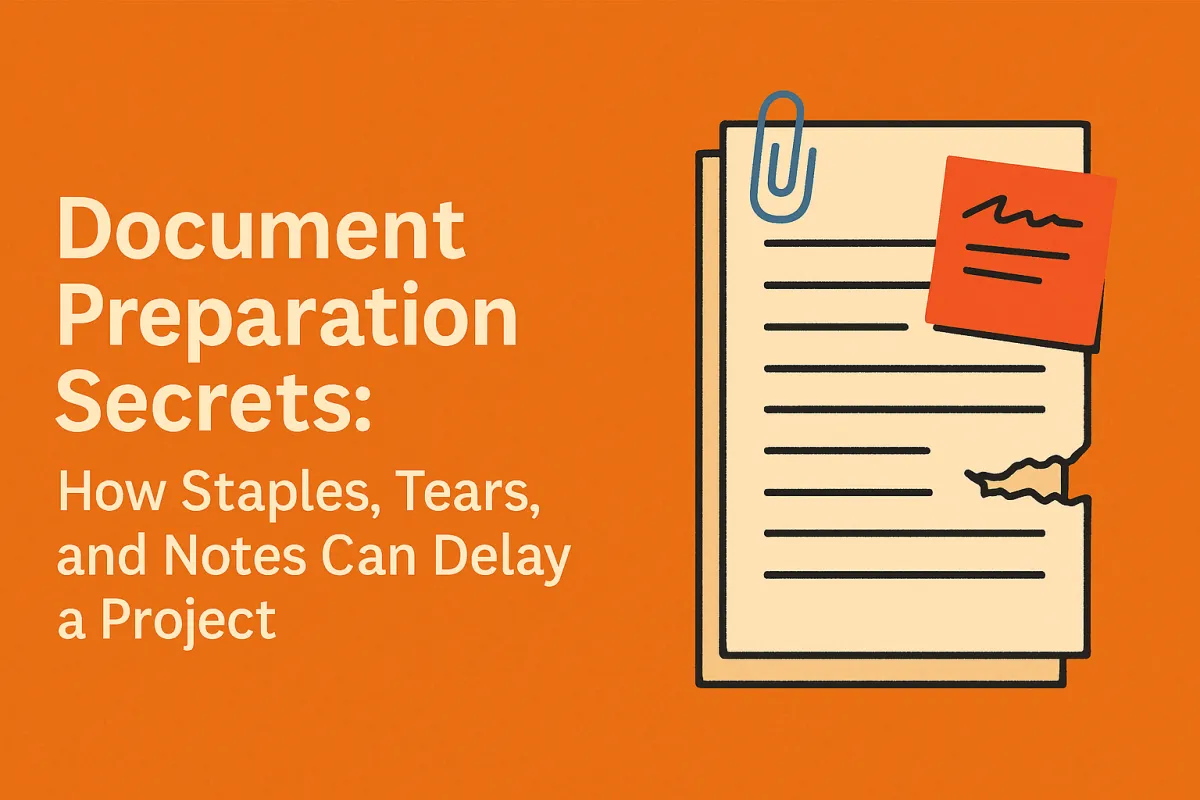
Document Preparation Secrets: How Staples, Tears, and Notes Can Delay a Project
By: USA IMAGING, Inc.
When it comes to scanning large volumes of documents, preparation is everything. Clients are often surprised to learn that some of the biggest delays—and unexpected charges—don’t come from the scanning itself, but from the time-consuming task of prepping documents before they ever touch a scanner.
Let’s pull back the curtain and show you how simple prep steps can translate into faster turnarounds, lower costs, and better scan quality.
What Slows Down a Scanning Project?
Before we can scan, documents must be clean, flat, and free of physical obstructions. The most common culprits that slow projects down include:
🔗 Staples, Paper Clips, and Fasteners
Removing staples and clips may seem minor, but when you’re dealing with thousands of pages, this task alone can add hours—or days—to your project timeline. Heavy-duty staples or prong fasteners embedded in folders require extra care and special tools.
📄 Torn or Curled Pages
Tears, folds, or dog-eared pages must be repaired or flattened before scanning to avoid jams, misfeeds, or missing content. Each damaged page requires manual handling, which increases labor time.
📝 Sticky Notes and Handwritten Notes
Post-it notes can obscure important text and may detach inside scanners. Staff must decide whether to scan them separately, place them on blank sheets, or digitally annotate. Similarly, margin notes can trigger decisions about cropping, contrast, and clarity.
📚 Bound Documents
Booklets, stapled packets, spiral bindings, and legal exhibits in folders all take extra effort to disassemble and organize for single-sheet feeding.
How Proper Prep Saves Time and Money
Well-prepped documents can cut total project time by up to 30% and help you avoid unexpected labor fees or rescan requests. Here's how:
✅ Group similar documents together (e.g., invoices, contracts)
✅ Remove all staples, clips, and fasteners ahead of time
✅ Flatten folded corners and repair tears with tape if needed
✅ Use paper separators or sticky notes to label key sections—outside the scan zone
✅ Avoid using glossy or unusually sized paper if possible
These small steps multiply in impact, especially on large jobs with thousands of pages.
Real-World Example
A law office submitted five boxes of client files for scanning. Because most were still clipped, stapled, and bound, the prep team spent two full days removing hardware, flattening folds, and reorganizing mixed documents—all before scanning even began. With just a few basic prep steps, that office could have saved time and hundreds of dollars.
Bonus Tip: Ask About Prep Services
At USA Imaging, Inc., we offer full-service document prep for clients who don’t have time or staff available. But we also provide guides and recommendations to help your team handle basic prep in-house if you prefer to reduce project costs.
Conclusion:
Don’t underestimate the prep. A few minutes spent upfront removing staples or organizing folders can translate into faster turnarounds, cleaner scans, and a smoother experience overall.
Need help with a high-volume scan project?
Contact USA Imaging, Inc. for expert scanning solutions—and prep tips that save you time and money.
Call us today: 858-513-6565 or email: [email protected]
